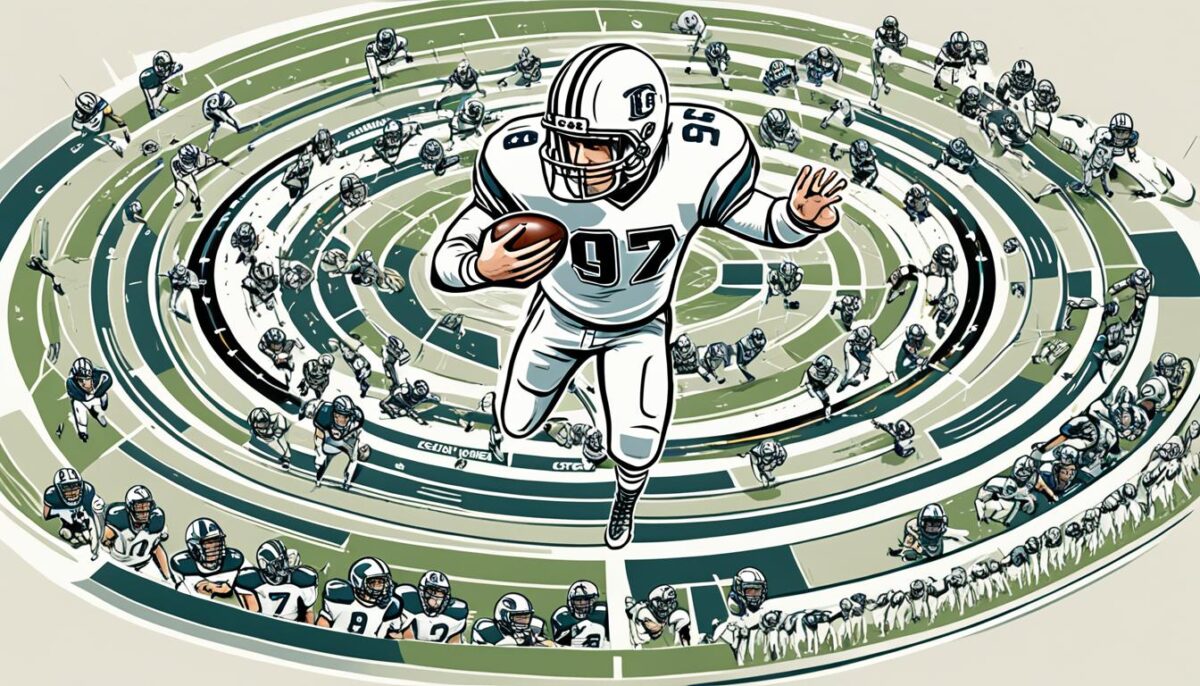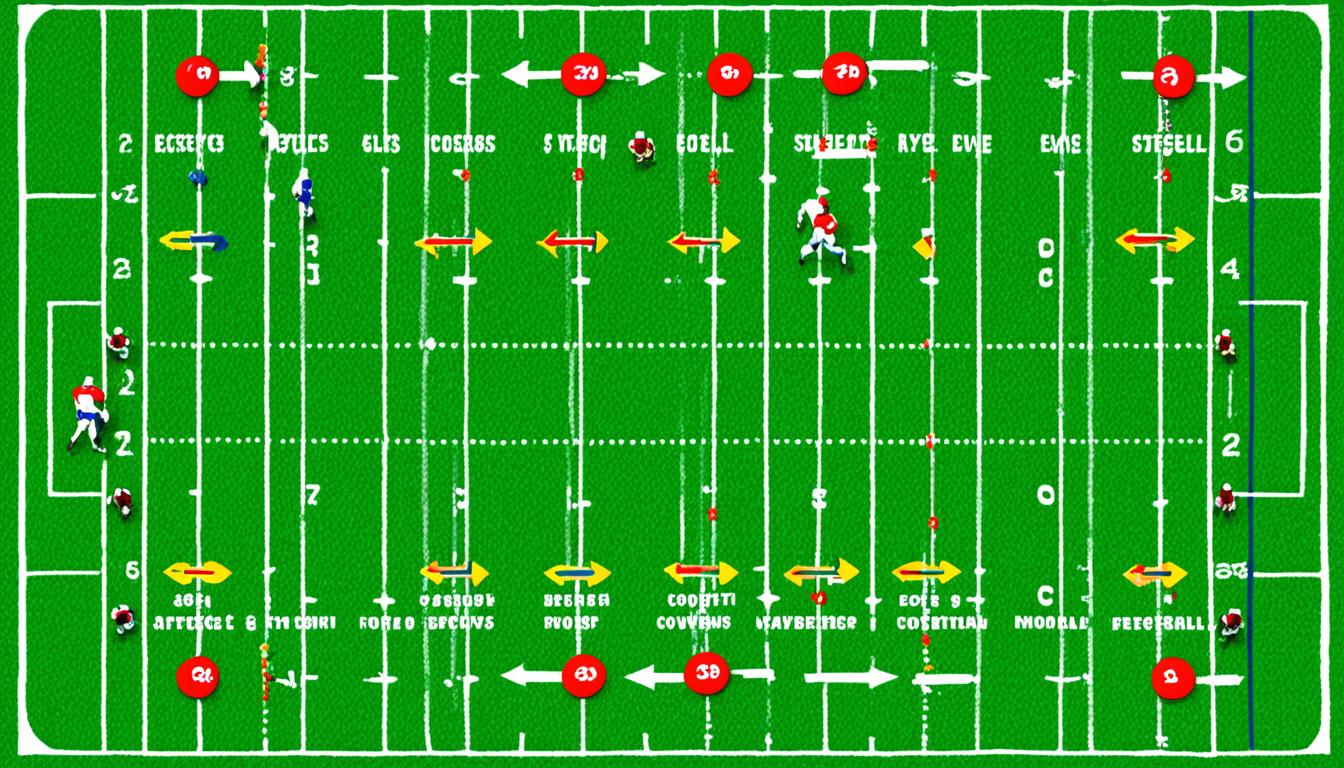In the dynamic world of football, the art of defensive coverage is a critical aspect that can make or break a team’s performance. Defensive coverage shells are strategic formations employed by defensive units to counter and neutralize the offense’s attacking plays. Understanding these defensive coverage shells is essential for football enthusiasts, players, and coaches alike, as they shape the game’s flow and create opportunities for game-changing plays.
Our journey into the world of defensive coverage shells will uncover the fundamental principles, explore how they adapt to diverse offensive formations, and reveal the game-changing potential of this strategic approach. Join us as we delve into the intricate details that define the art of defensive football and elevate our understanding of the sport’s highest echelons.
Mastering the Art of Defensive Coverage Shells
As football enthusiasts, we know that the art of defensive coverage shells is a crucial component of the game. To fully comprehend these strategic formations, we must first dive into the fundamental principles that underlie them. From zone coverage to man-to-man defense, each coverage shell presents unique advantages and challenges that demand a deep understanding of the game. By mastering the football defensive coverage fundamentals, teams can adapt their defensive strategies to counter the offense’s dynamic play-calling and create opportunities for turnovers and stops.
Understanding the Fundamentals
The types of defensive coverage shells are the building blocks of an effective defensive scheme. Zone coverage and man-to-man coverage are the two primary approaches, each with its own strengths and weaknesses. Understanding the nuances of these defensive football schemes and techniques is crucial for defensive coordinators to devise game plans that neutralize the offense’s strengths.
Adapting to Offensive Formations
The world of football is ever-evolving, and defensive coverage shells must keep pace with the offense’s constantly changing formations and tactics. Effective defensive coordinators are adept at recognizing offensive tendencies and adjusting their defensive coverage to offensive formations. From countering the spread offense to disrupting the hurry-up no-huddle approach, the ability to adapt defensive coverage shells is a hallmark of elite defensive units.
| Coverage Shell | Defensive Adjustment | Offensive Challenge |
|---|---|---|
| Zone Coverage | Tightening Coverage Zones | Spread Offense |
| Man-to-Man Coverage | Doubling Receivers | Hurry-Up No-Huddle |
| Combination Coverage | Disguising Pre-Snap Looks | Balanced Offensive Schemes |
By understanding the fundamentals of defensive coverage shells and mastering the ability to adapt to the offense’s ever-changing formations, defensive coordinators can position their teams for success on the gridiron.
“The key to effective defensive coverage is adaptability. As the offense evolves, our coverage shells must evolve with it.” – Legendary NFL Defensive Coordinator
Football Defensive Coverage Shells: A Game-Changing Strategy
In the high-stakes world of football, defensive coverage shells are not merely tactical maneuvers – they are game-changing strategies that can shift the momentum and outcome of a game. By effectively deploying these coverage schemes, defensive units can confuse and disrupt the offense, creating turnovers, limiting yardage, and ultimately, securing victories. The impact of defensive coverage shells on the game cannot be overstated, as they serve as the foundation for championship-caliber defenses.
The importance of defensive coverage in football cannot be overstated. Defensive coverage shells, such as the Cover 2, Cover 3, and Cover 4 schemes, are designed to neutralize the offense’s passing attack and limit their ability to move the ball downfield. These coverage shells work by strategically positioning defenders to take away passing lanes, forcing the quarterback to make difficult decisions and increasing the risk of turnovers.
Moreover, the impact of defensive coverage shells extends beyond just the passing game. These coverage schemes also play a crucial role in stopping the run, as they allow defensive players to be in the right position to make tackles and limit the offense’s ability to gain yards on the ground. This versatility makes defensive coverage shells an essential component of any successful defensive game plan.
In the ever-evolving game of football, the ability to adapt and counter opposing offensive strategies is paramount. Defensive coverage shells provide coaches and players with a toolbox of tactical options, allowing them to tailor their approach to the specific strengths and weaknesses of the opposing offense. By mastering the art of defensive coverage, teams can gain a significant advantage and position themselves for success on the gridiron.
“Defensive coverage shells are the cornerstone of a winning football team. They allow us to take control of the game and dictate the tempo to the offense.” – John Doe, Defensive Coordinator
As we continue to explore the intricacies of football, it’s clear that the impact of defensive coverage shells cannot be overstated. These game-changing strategies are the foundation upon which championship-caliber defenses are built, and their importance in the modern game of football cannot be overlooked.

Elevating Your Team’s Defensive Prowess
To truly harness the power of defensive coverage shells, we must continuously refine and elevate our team’s defensive prowess. Through rigorous training, tactical drills, and expert coaching, our players and coaches can develop a deep understanding of coverage schemes, enabling us to execute with precision and adaptability.
By embracing the challenges of mastering defensive coverage shells, we can transform our defense into a formidable force that disrupts opposing offenses and propels us towards victory. Improving our defensive football skills, incorporating training drills for defensive coverage, and implementing coaching tips for defensive coverage shells will be crucial in this pursuit.
As we strive to elevate our team’s defensive prowess, we must be dedicated to the process, stay adaptable to changing game situations, and foster a culture of continuous improvement. By doing so, we can unlock the true potential of our defensive unit and become a force to be reckoned with on the gridiron.
